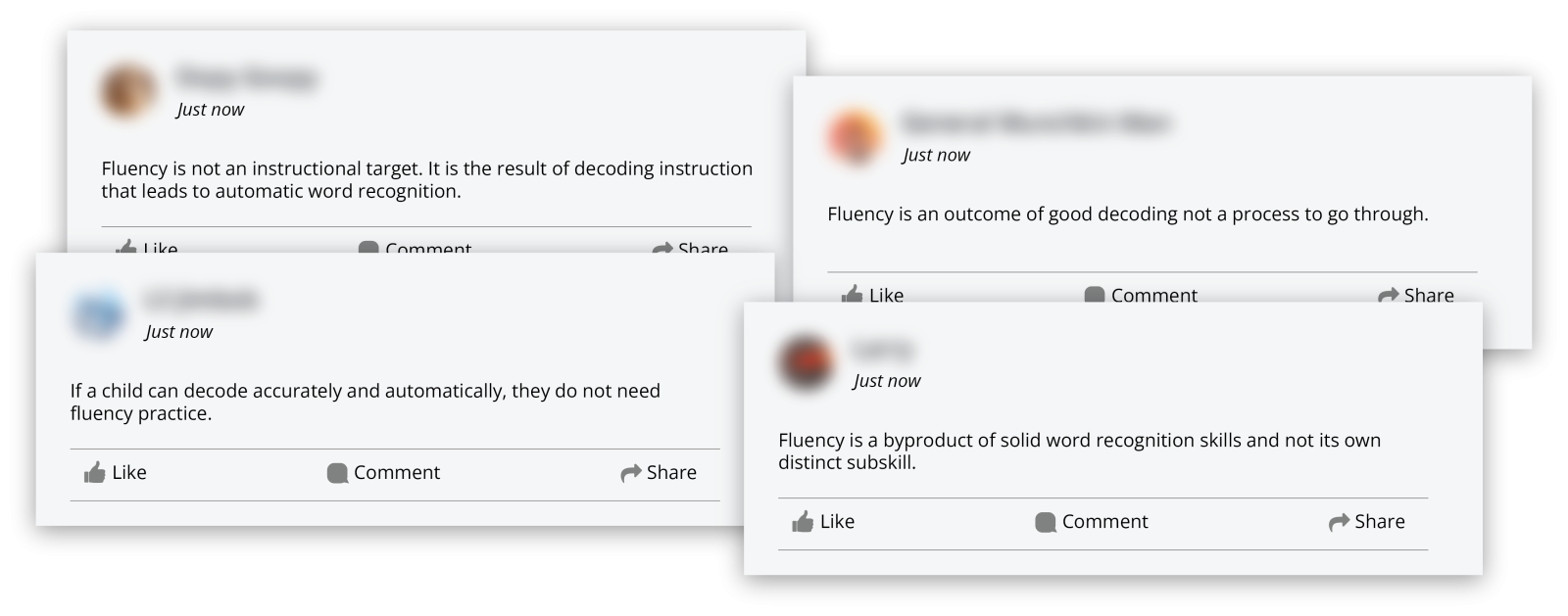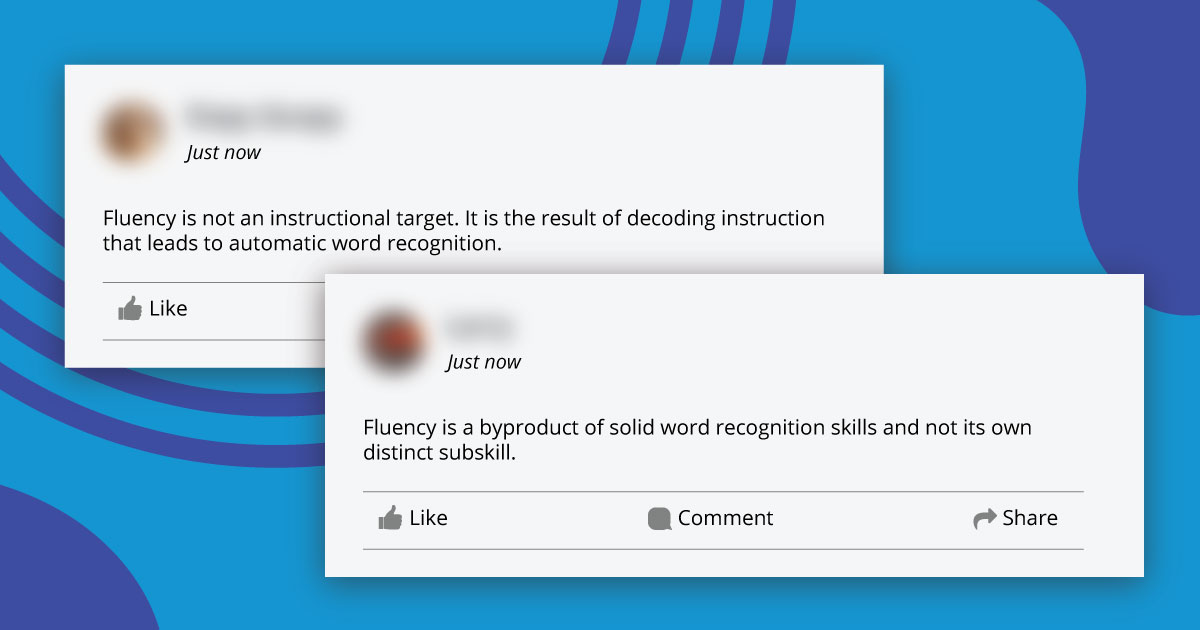 Have you ever heard comments like this? They’ve been popping up lately in online discussion forums, and surprisingly, they’re not sparking much debate. Is reading fluency just a natural byproduct of decoding development? If only it were that simple! Fluency is one of the five essential components of reading because it’s a distinct part of skilled reading. Of course, the five components don’t exist in separate vacuums; they overlap and influence each other. Naturally, this can cause some confusion. Let’s discuss the relationship between phonics, fluency, and comprehension.
Have you ever heard comments like this? They’ve been popping up lately in online discussion forums, and surprisingly, they’re not sparking much debate. Is reading fluency just a natural byproduct of decoding development? If only it were that simple! Fluency is one of the five essential components of reading because it’s a distinct part of skilled reading. Of course, the five components don’t exist in separate vacuums; they overlap and influence each other. Naturally, this can cause some confusion. Let’s discuss the relationship between phonics, fluency, and comprehension.
There’s no doubt that automatic word recognition is a key reason why text fluency is so highly correlated with comprehension. When students can automatically read words, their cognitive load is freed up for meaning-making. Students must first develop their decoding skills in order to eventually become automatic decoders. But is an automatic decoder the same as a fluent reader?
Consider this reading sample:
This student is accurate and automatic, but his overall reading ability remains limited.
Now consider this reading sample:
This student demonstrates accuracy and automaticity on a different level. Her reading sounds like speech. She doesn't simply read the words automatically, but she is also able to connect the words automatically and with expression to effectively convey meaning. This is a fluent reader.
Even with extensive phonics instruction and practice, many students still struggle to read well—with fluency. That’s because reading fluency goes far beyond automatic word recognition. It’s an amalgamation of accuracy, rate, and expression that can be applied automatically and seamlessly to authentic texts.
ACCURACY
Phonics instruction plays a crucial role in helping students decode words correctly. But fluency instruction takes students to the next level. Developing text fluency requires a lot of practice accurately recognizing words within multiple kinds of text, including the many words that are frequent in the language but less decodable (and even not decodable) according to the phonics rules. Furthermore, fluent readers don’t just recognize words correctly—they recognize them within the context of meaning. Take homographs, for example. Words such as read, live, and bass can be pronounced differently depending on the context. A fluent reader doesn’t just decode words—they interpret them correctly within the sentence, applying meaning as they read.
RATE
Isolated word lists help build automaticity in recognizing individual words, but reading fluency practice allows students to apply that automaticity within connected text. Students who practice fluency engage in large amounts of meaningful reading and repeated exposure to words in context, which accelerates their ability to process words efficiently. The more exposure they have to connected text, the easier it becomes to shift from effortful decoding, through automatic word recognition, to effortless, natural reading. It's important to note that the pace of natural reading falls within a reasonable range—neither too slow nor too fast. Fluent readers are not speed readers.
EXPRESSION
Decodable books provide structured phonics practice within text—which is very useful early in a reader's development. But they often contain limited vocabulary, unnatural sentence structures, and rigid formats that don’t reflect real-world reading. Fluent readers must develop intonation, phrasing, emphasis, and natural pausing. They must be able to automatically group words and read with appropriate rhythm. These aspects of text fluency are not addressed in phonics instruction. They develop through fluency instruction that includes modeled fluent reading, lots of practice, and timely feedback.
Accuracy, rate, and expression must work together for a student to become a truly fluent reader. Developing phonics skills is necessary, but usually reading fluency does not magically occur simply because a student masters decoding. Fluency requires explicit instruction and practice. And when students eventually read fluently, we can often hear that they understand what they are reading.
At Read Naturally, we have always fully supported explicit, systematic phonics instruction (even when it wasn't popular). Consequently, we’ve long offered targeted phonics programs like Word Warm-ups Live. However, we know that text fluency is also an essential component of reading that for many students requires a dedicated effort. For this reason, Read Naturally has combined phonics and fluency instruction within single programs. The Read Naturally Live Phonics series and GATE+ teach phonics skills, help students bring them to mastery, and include stories written with words containing the featured phonics sounds.
To learn more about reading fluency and how to incorporate it into your reading instruction, click here.

 Share your student’s success story—nominate him or her for our Star of the Month award. Win a Barnes & Noble gift card for the student and a Read Naturally gift certificate for your class!
Share your student’s success story—nominate him or her for our Star of the Month award. Win a Barnes & Noble gift card for the student and a Read Naturally gift certificate for your class!
Post a New Comment